Microplastics cause "osteoporosis" in corals! NSYSU's latest research published in a top journal
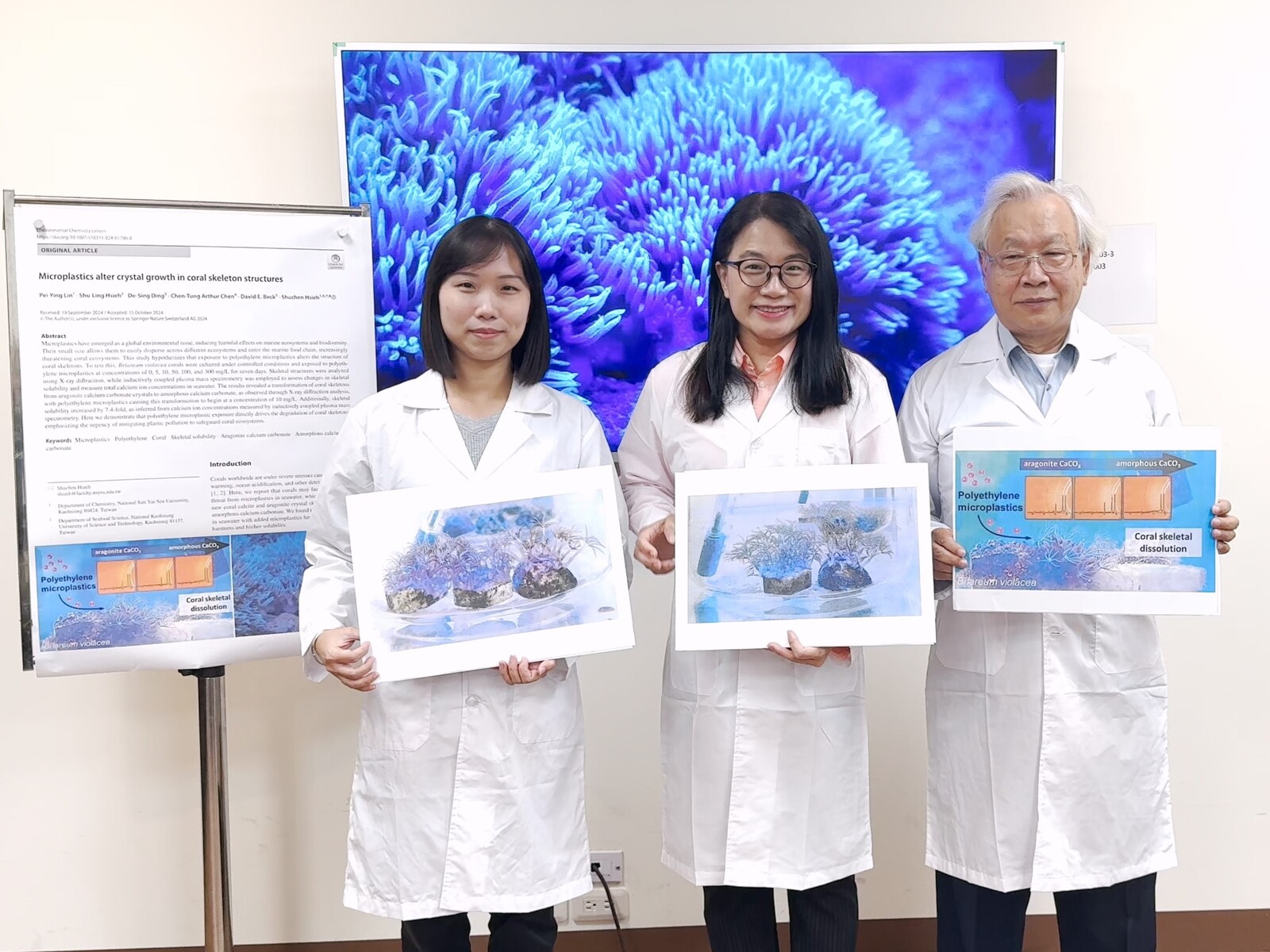
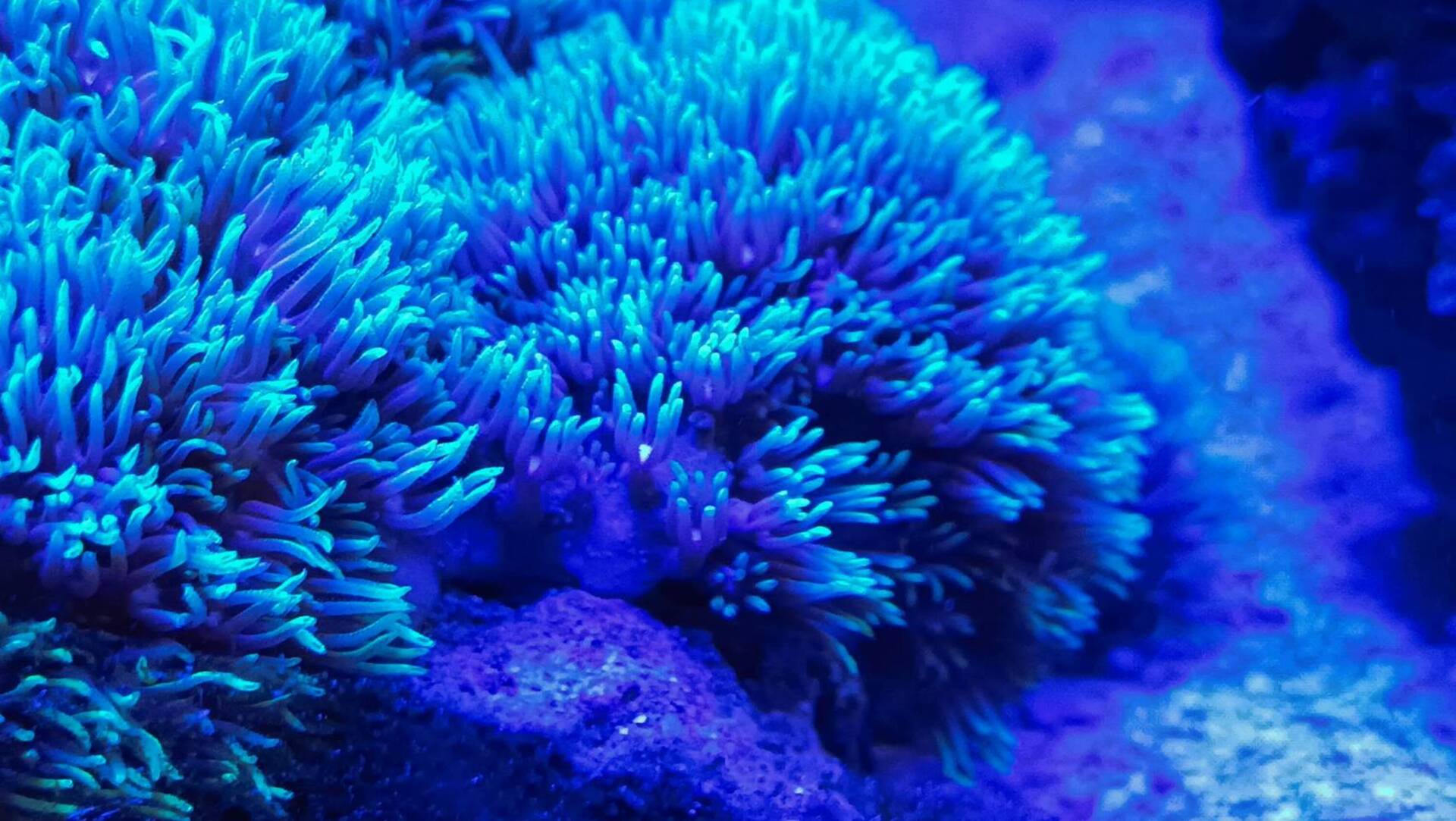
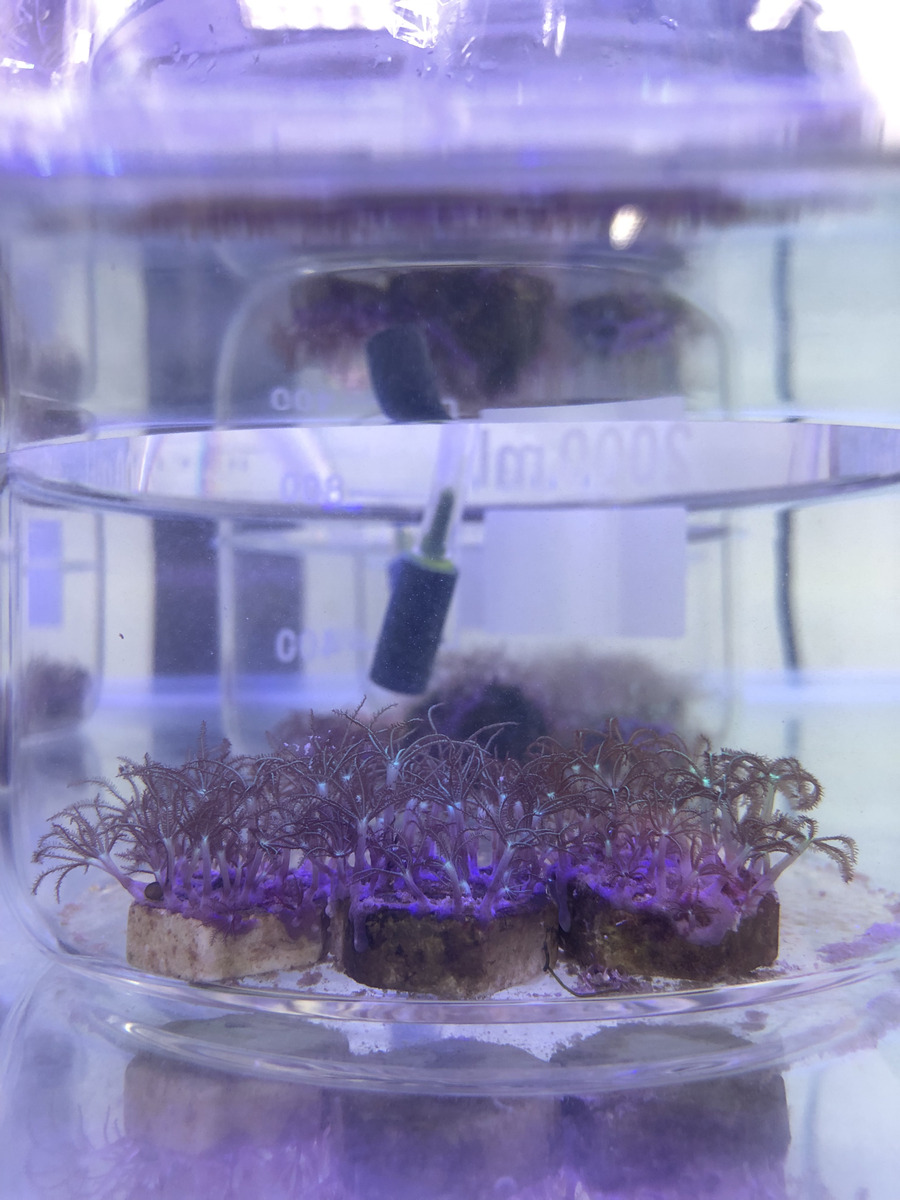
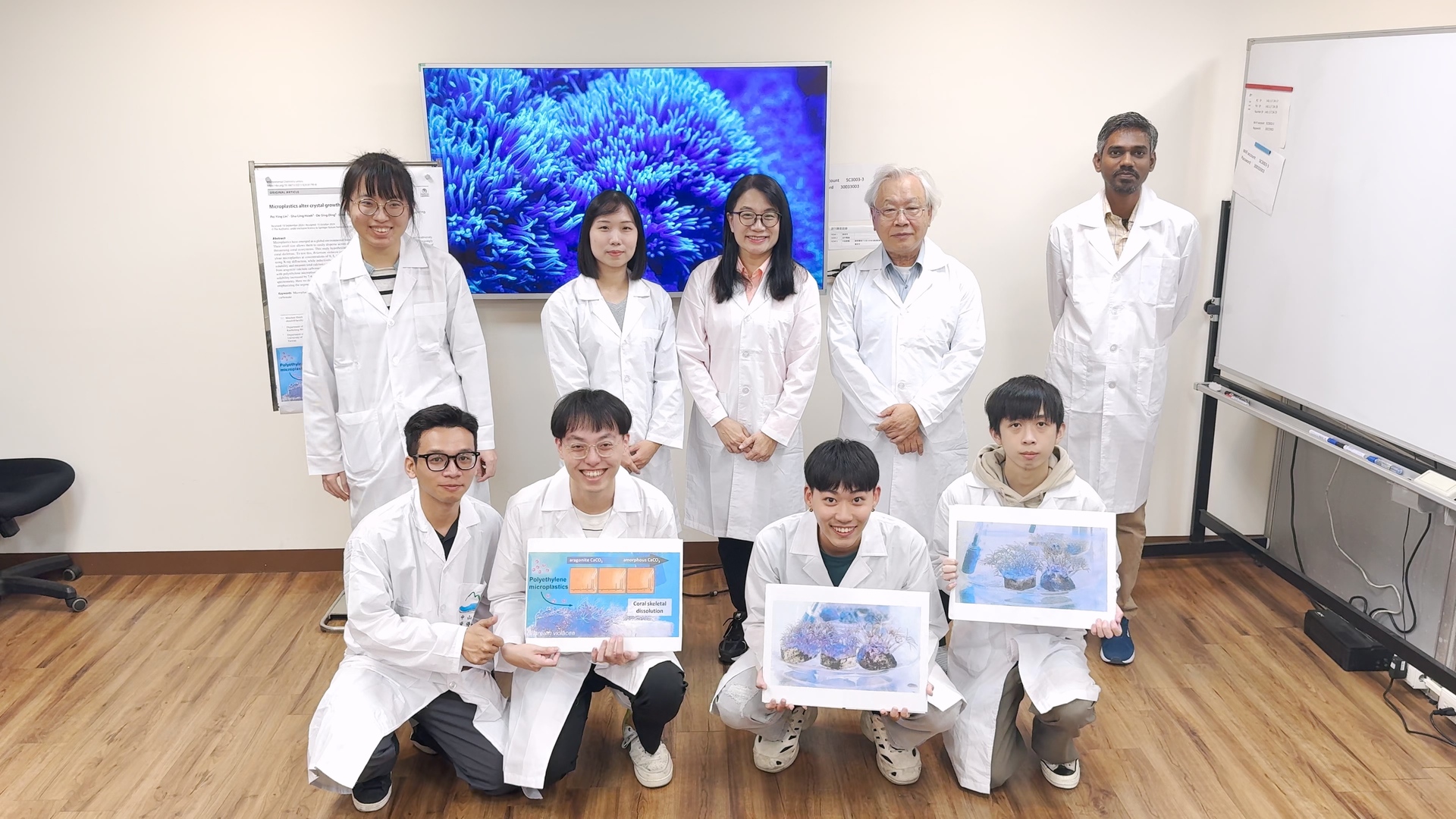
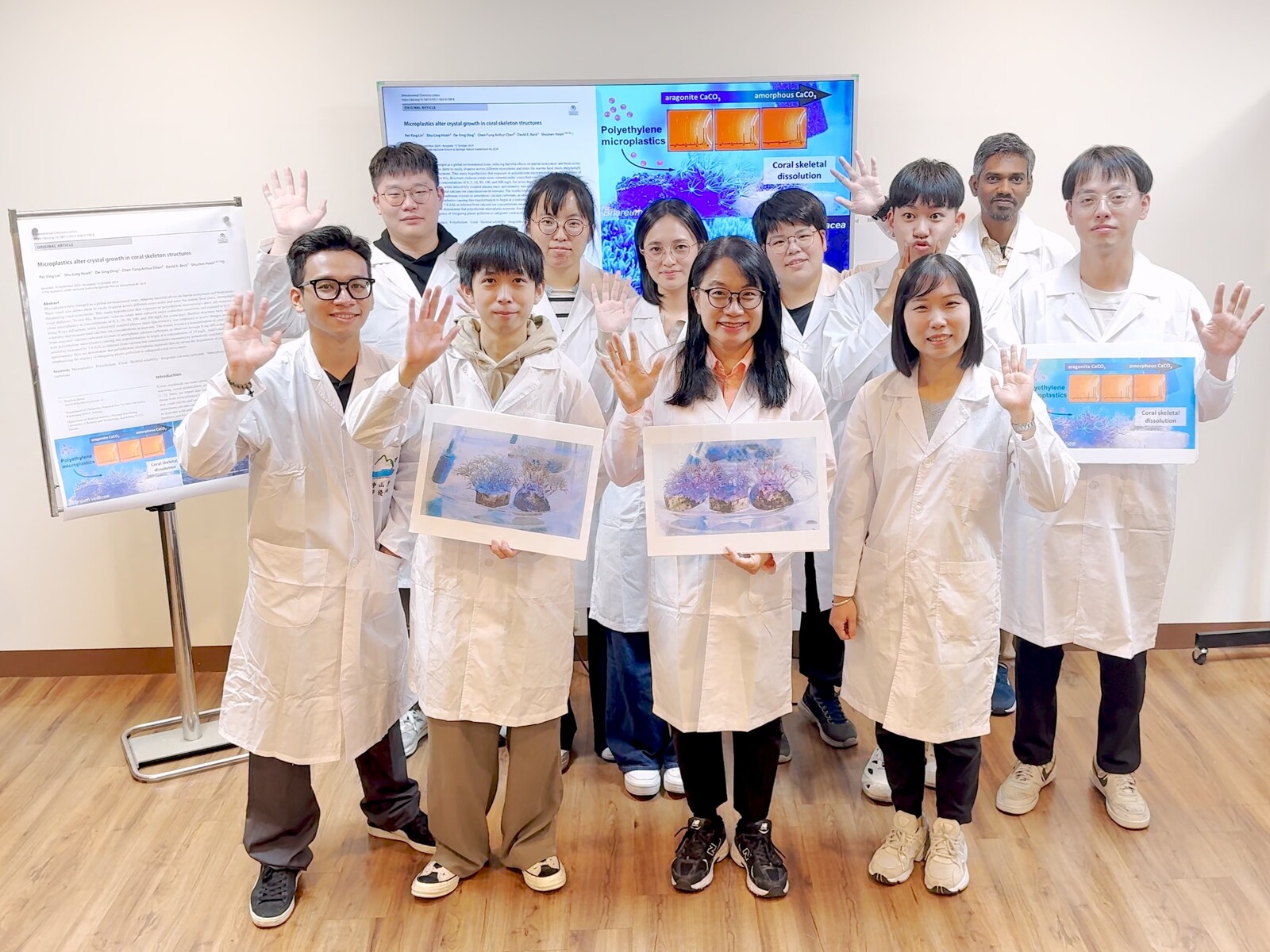
2025-04-15
Microplastics have been found to stunt coral growth and make them more prone to "osteoporosis." A study led by Distinguished Professor Shuchen Hsieh from the Department of Chemistry at National Sun Yat-sen University (NSYSU), in collaboration with Distinguished Chair Professor Chen-Tung Arthur Chen from the Department of Oceanography at NSYSU and an Academician of Academia Sinica, discovered that microplastics alter the crystal structure of coral skeletons, posing a threat to coral ecosystems. This research provides an in-depth analysis of the damage caused by microplastics to coral structures and was recently published in the prestigious international journal Environmental Chemistry Letters, offering crucial insights into how plastic pollution impacts marine corals.
In the world's beautiful oceans, coral reefs are like precious gems that nurture rich biodiversity. However, as plastic waste from human activities continues to increase, microplastics are carried by ocean currents to major marine ecosystems worldwide, threatening marine life and human health. Corals are under unprecedented stress—not only from climate change and ocean acidification but also from microplastic pollution, which poses a new challenge to coral growth and health. Given the diversity of coral species, the exact mechanisms by which microplastics harm corals remain a critical area of scientific inquiry.
The research team at NSYSU has provided key insights into this issue. Professor Shuchen Hsieh explained that the study exposed Briareum violacea, a type of soft coral, to seawater containing 5 ppm of polyethylene microplastics and found that the microplastics hindered coral skeletal growth, making the skeletons more susceptible to "osteoporosis." Soft corals like Briareum violacea produce tiny calcium carbonate spicules, which are secreted by coral polyps and distributed throughout the coral tissue, providing structural support and habitat for various marine organisms.
Using X-ray diffraction analysis, the research team examined coral skeletons and found that healthy Briareum violacea corals contain two main forms of calcium carbonate crystals: calcite and aragonite. As the concentration of polyethylene microplastics increased, the signal and structure of calcite weakened significantly, indicating skeletal damage. At higher polyethylene microplastic concentrations, aragonite crystals almost completely disappeared, replaced by unstable amorphous calcium carbonate. These microplastics not only compromised the structural integrity of coral skeletons, making them more prone to dissolution, but also altered calcium ion concentrations in seawater. Seawater analysis revealed a significant increase in calcium ion concentration in samples exposed to microplastics, suggesting that coral skeletons dissolve more easily. Additionally, Briareum violacea corals exposed to polyethylene microplastics released more calcium ions, further indicating skeletal instability and increased dissolution. The study confirms that exposure to polyethylene microplastics directly drives the degradation of coral skeletons, highlighting that the impact of microplastics on coral structures may be more severe than previously thought.
Professor Hsieh further emphasized that this study used a model system that could be expanded to investigate other coral species in the future. As environmental conditions continue to deteriorate, more corals—especially those in polluted environments—are likely to suffer severe health issues. The findings underscore the urgent need to mitigate plastic pollution to protect coral ecosystems. The researchers call for stricter regulation on microplastic pollution and continued monitoring of its ecological impact.
The research team also included Postdoctoral Researcher Pei-Ying Lin from NSYSU, Distinguished Professor Shu-Ling Hsieh from the Department of Seafood Science at National Kaohsiung University of Science and Technology (NKUST), Project Assistant Professor De-Sing Ding from the Department of Aquaculture at NKUST, and David Beck from Oxford Instruments Asylum Research Inc.
Journal link: https://doi.org/10.1007/s10311-024-01790-8
